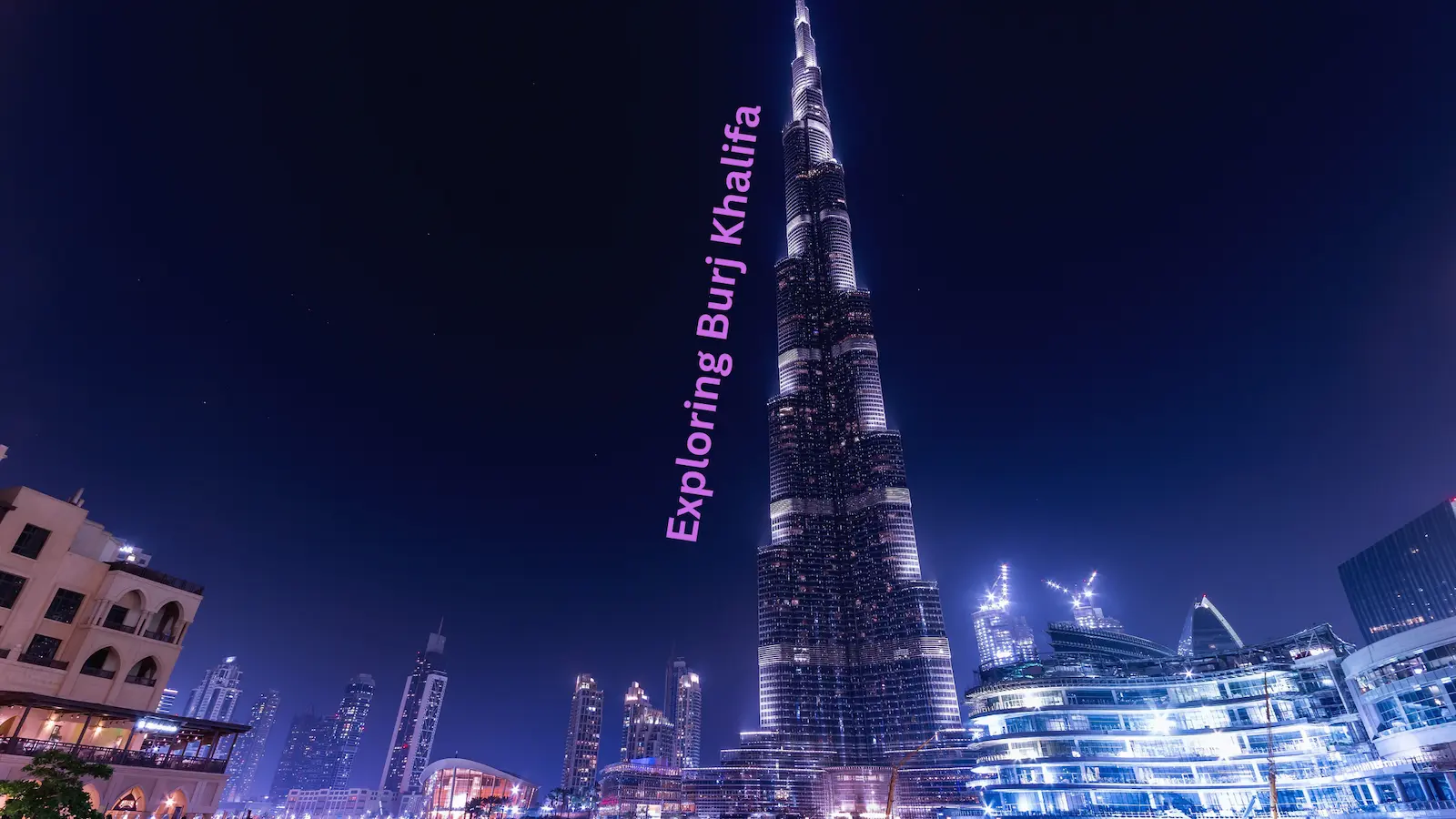At 830 meters, the iconic Burj Khalifa in Dubai stuns visitors with its grandeur. Its unique design and engineering feat make it one of the most recognizable landmarks in the world today – a symbol of achievement for the United Arab Emirates. Since opening to public visitors just over a decade ago, this architectural marvel has attracted millions from around the globe to come to witness its beauty, while tourists explore its history and uncover stories behind this amazing building. Let’s take a closer look at what sets Burj Khalifa apart from other skyscrapers across our planet and learn why this impressive tower continues to stand tall!
Introducing Burj Khalifa – the world’s tallest building
The Burj Khalifa is a marvel of modern architecture and engineering. Standing at over 828 meters tall, it is officially recognized as the world’s tallest building. A true symbol of human achievement and innovation, it was designed by Adrian Smith and developed by Emaar Properties. Completed in 2010, this awe-inspiring structure boasts breathtaking views of Dubai’s skyline and beyond. It is home to numerous high-end residential units, exclusive corporate offices, as well as luxury hotels, and tourist attractions. The Burj Khalifa is not merely a building, but an icon of Dubai’s global status and its relentless pursuit of excellence.
Exploring the design and construction of Burj Khalifa
When it comes to iconic structures, few can match the awe-inspiring height and beauty of the Burj Khalifa. Standing at an impressive 828 meters tall, this magnificent skyscraper is a marvel of modern engineering. The construction of Burj Khalifa began in 2004 and was completed in 2010, taking a total of six years to build. Its unique design was inspired by the shape of a desert flower and is made up of a series of petals that taper as the building reaches towards the sky. The foundation of the building is made up of hundreds of piles that are each over 40 meters deep and are built to withstand the harsh desert environment. The result is a visually stunning structure that has become a worldwide symbol of human ingenuity and determination.
Admiring its awe-inspiring architecture from all angles
The architecture of certain structures around the world is truly awe-inspiring, and looking at them from various angles offers a new appreciation for the design and intricacy of the buildings. From narrow alleyways to busy streets, these towering marvels stand as a testament to human achievement. Whether it’s the grandeur of St. Peter’s Basilica in Rome or the modern flair of the Burj Khalifa in Dubai, taking the time to appreciate the craftsmanship of these edifices can be a humbling experience. Even structures that may seem commonplace can still hold significant architectural value when viewed in the right light. Admiring these feats of construction from all angles allows us to fully experience the stunning beauty of these buildings.
Learning about the engineering feats that make the tower so tall
The towering presence of skyscrapers across the world often leaves us in awe. The structural design, materials used, and engineering feats involved to create such tall buildings is truly remarkable. One such building that stands tall among the rest is the Burj Khalifa, which holds the title of being the tallest building in the world. To understand how this building reached such extreme heights, it’s fascinating to delve into the complex engineering techniques involved. From the reinforced concrete core that supports the weight of the building to the use of advanced elevators, there are many innovative elements that have been used to make this tower stand tall. By studying the Burj Khalifa’s construction process, anyone can learn about some of the marvels that could be achieved using modern technology.
Examining the symbolism behind its design elements
The symbolism behind a design element can often speak volumes about its intended meaning. Examining the details of a design can reveal hidden messages and significant cultural references that the creator intended to convey. From the placement and shape of objects to the use of specific colors and patterns, every element in a design serves a purpose. For example, an eagle may symbolize strength, freedom, and national pride, while a dove can represent peace and harmony. A careful analysis of the symbolism behind certain design elements can reveal deeper layers of meaning that may not be immediately apparent at first glance.
Discovering how it has impacted Dubai’s skyline and economy
Dubai’s skyline has been transformed over the past few decades, thanks to its booming economy and ambitious urban development plans. The city now boasts iconic landmarks such as the Burj Khalifa, the world’s tallest building, and the sail-shaped Burj Al Arab hotel. These structures not only bring in tourists from all over the world but also symbolize the city’s progress and modernization. However, their construction has also been controversial, raising concerns about sustainability and the exploitation of migrant workers. Despite these challenges, Dubai’s impressive skyline is a testament to the city’s determination to become a global leader in business, tourism, and innovation.
In conclusion, Burj Khalifa is one of the most impressive and remarkable man-made structures in the world. It stands tall as a symbol of Dubai’s ambition and its dedication to making it the foremost tourist destination on the planet. The design, construction and engineering feats that combined to create the building are outstanding and make it an awe-inspiring place to visit. Every visitor can explore and admire its architectural magnificence, which has undeniably impacted local skylines and economies. Consequently, it is certainly worth taking a trip to Dubai to witness this feat of modern engineering first-hand – it truly is something special!
Read Also: Exploring Ain Dubai
